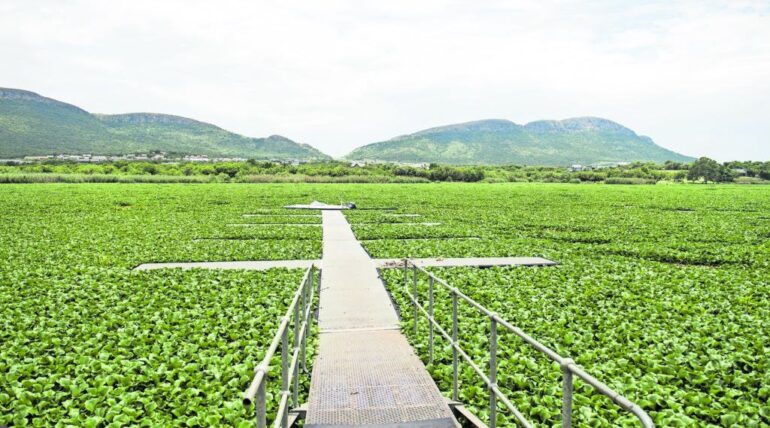In the heart of Africa, where agriculture remains the backbone of many communities, a quiet revolution is taking root. It’s not just about planting more crops or using better seeds—it’s about rethinking the entire system. Enter the bioeconomy: a bold, sustainable approach that puts biological resources, innovation, and climate resilience at the core of agricultural growth. In Kenya, AGriKilimo Consultancy Services is leading this transformation.
So, what is the bioeconomy? Why should it matter to farmers, policymakers, and agripreneurs? And how exactly is AGriKilimo making this concept real, practical, and impactful?
Let’s dig in.
Understanding the Bioeconomy
The bioeconomy is a development model that uses renewable biological resources—like crops, animals, microbes, and organic waste—to produce food, energy, and materials in a sustainable way. It’s about circularity, where waste is minimized and every resource is used to its fullest. Think composting instead of chemical fertilizers. Biogas instead of firewood. Natural pesticides instead of synthetic ones.
At its core, the bioeconomy connects environmental stewardship with economic opportunity. It’s a vision for agriculture that feeds people, regenerates the land, and creates jobs—all without harming the planet.
AGriKilimo: Turning Theory Into Action
AGriKilimo Consultancy Services has taken the lofty idea of the bioeconomy and translated it into tangible results for farmers and institutions across Kenya. The firm works at the intersection of research, policy, and grassroots implementation. Its focus? Empowering communities with sustainable tools and knowledge.
From regenerative farming to clean energy, AGriKilimo is proving that the bioeconomy isn’t just a buzzword—it’s a lifeline for agriculture in the face of climate change, soil degradation, and food insecurity.
Here’s how they’re doing it:
1. Climate-Smart Agribusiness Solutions
Climate change has made farming unpredictable. AGriKilimo’s response is a set of smart, sustainable solutions:
- Farm advisory visits tailored to local needs and conditions
- Strategic agribusiness planning for long-term resilience
- Sourcing of biofertilisers, biopesticides, and soil amendments that restore soil health without harming the ecosystem
These efforts help farmers shift from conventional, input-heavy agriculture to regenerative practices that build biodiversity, retain water, and sequester carbon in the soil.
2. Building Bio-Based Value Chains
Kenya is rich in natural resources—but much of it goes to waste. AGriKilimo helps create value where others see waste. By developing bioproduct-based value chains, the firm connects farmers with markets for things like:
- Organic compost
- Herbal pest repellents
- Plant-based packaging
This approach ensures that agriculture is not only productive but profitable and eco-conscious.
3. Bioenergy for Sustainable Growth
Energy remains a challenge for many rural households. AGriKilimo is changing that by promoting clean, affordable bioenergy solutions such as:
- Biogas systems that convert cow dung into cooking gas
- Biodigesters that reduce reliance on firewood and charcoal
- Carbon farming programs that reward climate-smart practices with carbon credits
With these innovations, farmers reduce their carbon footprint while saving money—and in some cases, even earning from waste.
4. Policy Advocacy and Research
The bioeconomy needs the right policies and frameworks to thrive. AGriKilimo plays a key role in shaping agricultural policy by working with:
- Government institutions
- International development partners
- Research organizations
The goal is to create an enabling environment where bio-based innovations are recognized, supported, and scaled up. Through multidisciplinary research, AGriKilimo helps build the knowledge base needed to back this transition.
5. Capacity Building and Education
Change happens when people have the right knowledge and tools. AGriKilimo invests in training and mentorship through partnerships with:
- Technical and vocational training institutions
- Community groups and cooperatives
- Startups and agribusinesses
From workshops on regenerative farming to business planning sessions for biotech startups, AGriKilimo equips stakeholders across the value chain.
One standout example is their involvement with WERU Technical and Vocational Training Center in Malindi, where they deliver bioeconomy innovations under the RIGES Project funded by Mastercard Foundation.
Real People, Real Impact
AGriKilimo’s approach is not just theoretical—it’s deeply personal. Take Grace Atieno from Kisumu, for instance. Through AGriKilimo’s support, she turned a struggling vegetable plot into a thriving organic farm. Today, she trains other women in her community and sells premium produce to eco-conscious buyers.
Or Peter Njoroge in Kiambu, who installed a biogas system with AGriKilimo’s help. His household no longer buys charcoal, and his cows’ waste powers both his kitchen and his farm.
These stories show that the bioeconomy isn’t about high-level science—it’s about everyday people finding smarter, greener ways to live and work.
The Bigger Picture
As Kenya pursues its Vision 2030 and aligns with the UN Sustainable Development Goals, the bioeconomy offers a pathway to:
- Food security through resilient farming
- Job creation via green enterprises
- Environmental restoration through nature-based solutions
- Youth engagement by making agriculture innovative and tech-driven
AGriKilimo stands at the forefront of this movement—not just as a consultancy, but as a partner in progress.
Conclusion: Growing the Future Together
The world is waking up to the fact that we can’t farm the way we used to. Climate change, land degradation, and economic inequality demand a new path forward. The bioeconomy, as championed by AGriKilimo, offers that path—one that is sustainable, inclusive, and hopeful.
With smart science, community engagement, and bold partnerships, AGriKilimo is showing what agriculture can become. Not just a means to survive—but a way to thrive.






